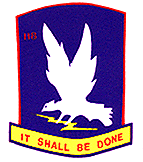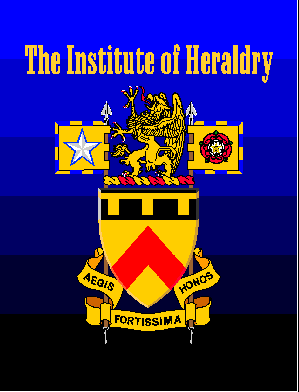 |
|
 |
|

|
|
|
|
|
|
|
Alan Laya, an H-21 pilot, remembers what happened: "Friday, 30 Aug 1963, the 118th conducted a fifteen ship combat (action) in the Tay Ninh area, ten ships from our company and five from the 120th. I was in Bravo flight, number two aircraft of five in a V-formation. In our pre-take-off briefing with Capt. (James E.) Wenzel and Lt. (Timothy M.) Lang leading the flight, we planned on gaining altitude over Bien Hoa and flying over the scud at 1500 feet. On take-off, we received a call to contour the 55 miles to Tay Ninh, forty minutes of flying over stretches where VC's are known to be with no escort Huey's for support. Our ships were empty with the ARVN troops waiting for us at Tay Ninh." "For thirty minutes we clipped the tree tops and skimmed the rice paddies. At coordinates XT 500300, we dropped off the tree-tops into a little clearing with about a foot of water from the rains. Our lead ship(212) suddenly went into a violent flare approx. 100 yards from the tree line. A second later the aft rotor blades were digging themselves into the ground and the aircraft toppled over on its side disintegrating on impact. Being the following aircraft, it was our responsibility to retrieve the crew and S.O.P. for the other aircraft to continue the mission. We made a 270 turn to the right, all three other ships peeled around and followed us into the area. As we set down facing our machine guns into the tree-lines, the other aircraft set up a perimeter completing a semi-circle around the downed ship. The water around all the ships turned into little fountains from the incoming fire of VC's in the trees." "On touch-down, I sent our crew chief (Robert A.) Graupman and PLT SGT Milbauer to rescue the crew. (Norman H.) Guthrie and Witherell from 141 and 657 jumped out to help, all this while being under fire. The gunners couldn't feed their 30 cal. fast enough to deep the fire from the ground crews. Witherell, a big boy himself, put the gunner of the downed ship, 212 on his back and carried him to 657 getting splashed from bullets landing near him. After placing the 200 lbs injured gunner in the ship, he tried to return to 212 to give more needy help, but got shot in the leg and tumbled into the water. Not being able to help the others, he sat in the water spraying the tree-line until SGT C. J. "Duke" DuShane helped him back to 657 and Capt (James A.) Kilgore helped put him on the aircraft." |
|
"Aircraft 212 was spread all over, but under the direction of Sgt. Milbauer, the team evacuated the wounded into the waiting, H-21's and policed the weapons and ammunition. Thee were very few words spoken and direct orders were unnecessary because everyone on the ground knew what had to be done and did it without hesitation or question. The injured needed immediate medical attention; there was no time to wait for the Med ship, the area was hot, and as the gunner on 148, Sgt. Curry said, "I'm running low on ammunition, Sir!" he fired nearly a thousand rounds and was wounded in the leg at the time." "The crew chief of 212, (John A.) Martino, miraculously walking under his power even while bleeding from the nose and mouth and under shock, had enough composure to help carry the wounded to the other ships. Sgt. Milbauer was the last to leave the downed ship and with a tracer, ignited the fuel cell. We all left the area leaving only a burnt shell. 148 staggered out with eight hits, two through the cockpit, and a wounded gunner. 141 took seven rounds, two through the fuel cell. 657 had a wounded crew chief; 132, lucked out." "The total time we stayed on the ground was seven minutes, it seemed like seven hours. There were no commands to break formation, land, set up a perimeter. Instinct, alertness and natural reactions turned what could have been a tragedy into an excellent maneuvered operation. 132, the sister ship of 212, has the complete crews of 141, 148, and 657 to thank for the protection and assistance we got in the rescue. Without the quick thinking on their part, two ships and nine Americans would have been lost." "At Tay Ninh, doctor and Med evac ships were waiting for the wounded. 657, 141 and 148 were too badly damaged to carry on with the mission. Our first lift into the landing zone was successful without any hits. The second lift was a different story. At mid-point, the VC's were waiting for us and clobbered the Alpha flight. I was in Bravo flight and saw the white smoke signifying enemy fire. We made a sharp turn to the right, but not soon enough, for we caught a round through the servo system coming up between my legs up through the plexiglass. Another entered the console and started an electrical fire. The aircraft pitched up but since we both were on the controls, we caught it in time and staggered to a landing spot. I thought our Christmas tree got hit, but fortunately not. We were being shot at all the way down, but we still had enough power to carry us over a tree line just out of range of the main concentration of fire. A 120th aircraft covered for us and followed us all the way down. After a safe touch down, we cut the engine and turned the switches off to stop the electrical fire. When leaving the aircraft, I found I landed in three feet of water. Non of our crew were injured, just overjoyed at seeing that big H-21 next to us waiting to take us back. Thank you Capt Hall and CWO Murrah." "On that Friday, 30 August 1963, thirteen of fifteen aircraft were hit, two crew killed and five crew were wounded. Two aircraft were downed; one demolished the other salvaged. I pray in thanks to my Leader, the Man up-stairs!" |